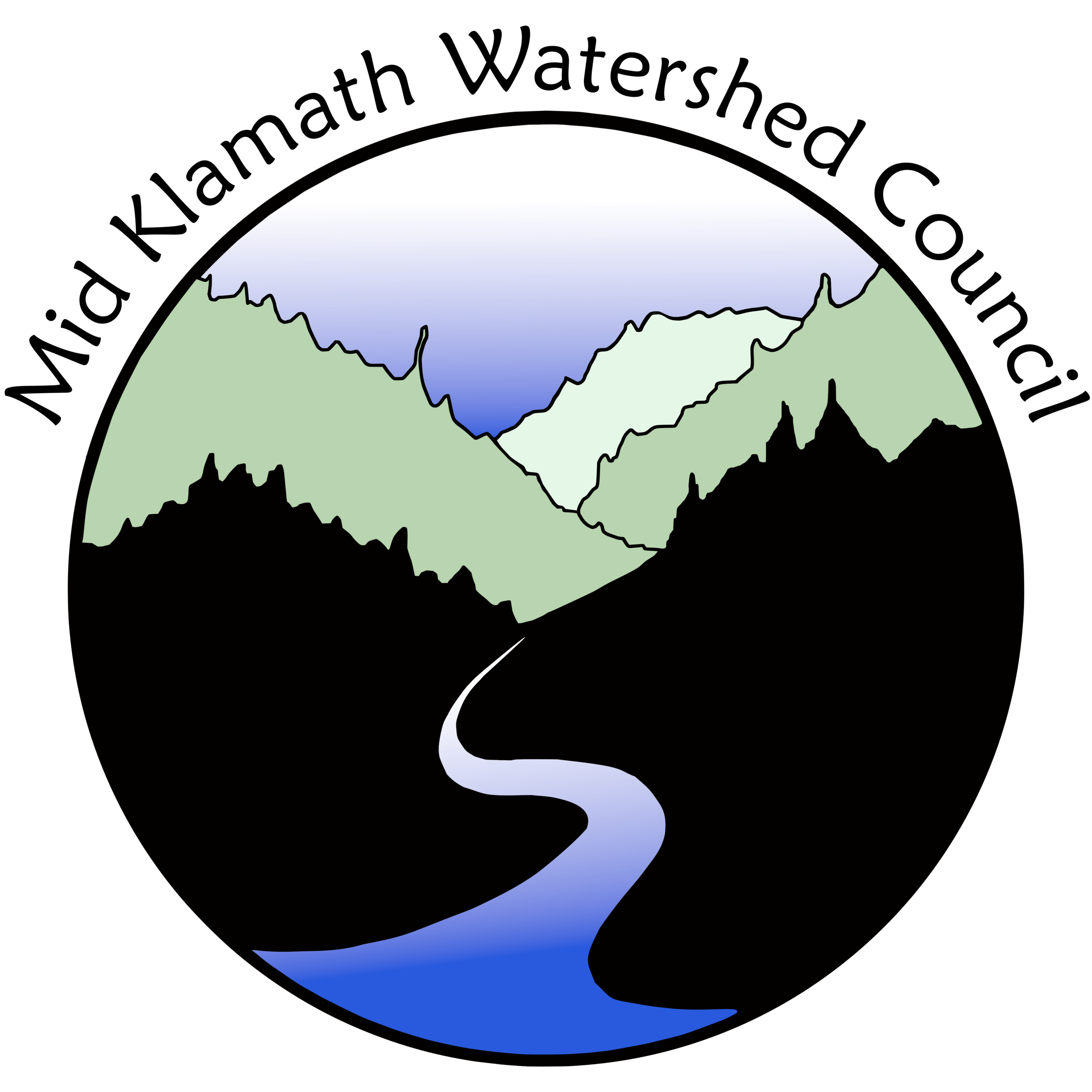Salmon In The Treetops: A Critical Feedback Loop
by Jillienne Bishop
It’s October in the Klamath Watershed—easily the region’s most beautiful month. The light is changing, shadows lengthening, and everything is ripe and ready to pick. It is time to celebrate harvest and renewal, but more than any of that, it is the time of year the Klamath Salmon are returning home.
The journey of Klamath salmon is nothing short of miraculous. It is believed they swim thousands of miles by navigating the stars and smelling their way back to their home streams—all for the promise of procreation. Salmon are anadromous, meaning they are born in freshwater, migrate to the ocean, and then return to freshwater to spawn. Salmon females dig salmon nests, or redds, in shallow moving water by moving small gravel substrate with their tails. Once the redd is constructed, female fish deposit eggs into the redd, and male fish fertilize them with milt. After completing their redds, adult spawners guard their redds for several days before dying. But their sacrifice is for more than just their young.
You can witness a small part of this process when you watch this short by FishBio films:
Video: Salmon Spawning over a redd. If you live in the Mid Klamath and want to volunteer with MKWC on a Fall Salmon Survey contact the MKWC office at (530)627-3202 or jimmy@mkwc.org
Salmon give to the treetops. As their carcasses decompose and are distributed throughout the riparian zone by animals such as Black Bear and Bald Eagles, they deliver nitrogen, phosphorus, and other marine derived nutrients to the trees, a process that can initiate bottom-up food web effects. Studies have shown that salmon rich streams provide adjacent terrestrial plants with 18-24% of their foliar nitrogen. As a result of this nutrient dispersal, growth rates of riparian trees are increased and the nitrogen increases foliage and litterfall. This creates a positive feedback loop by which nutrients from salmon carcasses help to improve aquatic habitat for future salmon.
The trees give to the salmon too. As large trees grow and eventually fall into the stream they create ecologically rich habitat for salmon. Scientists have determined that having an abundance of large woody debris in the stream can form large slow-water pools for rearing, help collect future spawning gravels, and prevent erosion that can harm downstream fish habitat.
However, the quantity and quality of in-stream woody debris has been drastically reduced in the Klamath Watershed by historical forest management practices. Logging, road building, culverts, and fire suppression have limited the number of trees that could fall into streams. In past decades, “stream cleaning” was sometimes conducted to remove fallen trees from streams, to prevent damage to infrastructure downstream, or in a misguided attempt to assist fish migration.
So what do we do now?
Put the wood back into streams! As salmon continue to bring us marine derived nutrients that help grow the abundant ecosystem of the Klamath, we can give back to them too. This past summer the Mid Klamath Watershed Council’s Fisheries program surveyed 15 low gradient tributaries for potential locations to input large woody debris (LWD). We are in the process of submitting proposals to place LWD structures in several of these streams. It's time humans gave back to the food web that supports us. By putting wood where we humans have often removed it in the past, we are giving salmon somewhere to hide, feed, spawn, grow up, chill out, and sustain a time-honored natural cycle.
Jillienne Bishop is a Watershed Education Program Director and Fisheries Project Coordinator for the Mid Klamath Watershed Council.




